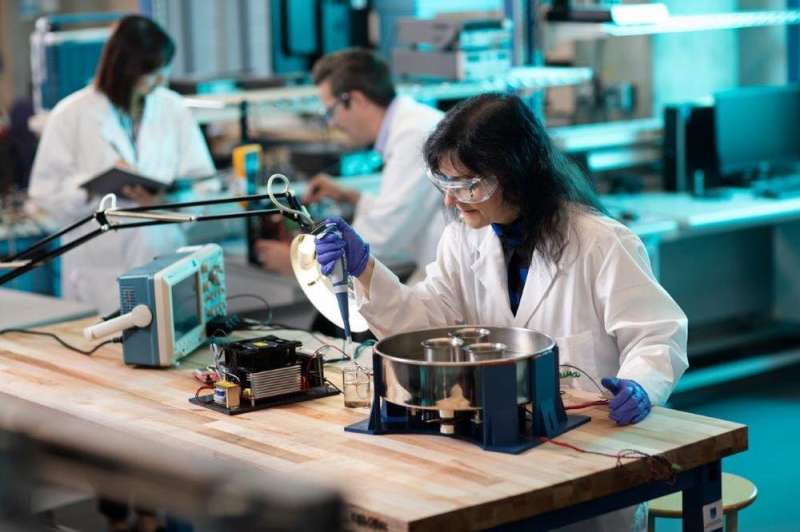From making wine to managing mine waste, clay is important for many industries

The discovery and use of clays dates back to , making clays one of the oldest materials used in society. Clays are naturally occurring materials that were first used to make pottery and are now used abundantly in the manufacturing of goods, including ceramics, cosmetics and building materials. Clays also play .
Clay has unique properties that are useful in industries ranging from manufacturing to construction. But these properties can also pose a challenge in managing mine waste.
Clays and clay minerals are tiny particles with a unique in size (for comparison, the average thickness of a strand of human hair is about 70 microns). The small size of clay minerals and their distinct structure give them unique properties, and different types of clay minerals can exhibit diverse characteristics.
Properties of clays
There are : kaolinite, illite, vermiculite and smectite.
Smectite clays for example, have the greatest ability to swell, often expanding several times their initial volume. Bentonite clay, a smectite, can by taking water into its interlayer, the distance between two layers of clays. This property makes it useful as a spill absorbent, but also means that it is very difficult to remove water from clay in dewatering processes, as in the case of mine waste management.

In contrast, kaolin, or china clay, does not swell and has low permeability, making it preferable for or .
Clays also develop plasticity when wet, giving them the ability to stretch without breaking or tearing‚ÄĒa critical property for pottery sculpting. The cause the water molecules to escape from between the clay sheets, and irreversibly changing the chemical structure of the clays, turning the piece into a hard and long-lasting pottery piece.
Clay and wine
Vineyard owners use their knowledge of clay content in the soil to help them make decisions about planting and irrigation so that they can improve the quality of the wine they produce. The soil composition in vineyards influences the drainage levels and the uptake of minerals and nutrients for the roots. Sandy soils are great for drainage, and clays, which have a net negative charge, help .
Clays also hold water quite well, which can be helpful in dry climates to keep the soil cooler and wetter. Certain vine varieties produce the best results in a particular soil type. For example, clay soils tend to produce and .

Clay in mine waste
While clays can be valuable materials in certain industrial processes, they can also cause problems in mine waste management. For example, ‚ÄĒproduced from the surface mining of oilsands‚ÄĒconsist of a mixture of water, sand, fine particles, clays and residual bitumen.
These tailings are stored in ponds, where the heavier sands settle quickly to the bottom and the fine particles and clays remain suspended. The water-loving nature of clays means that a lot of water is trapped in the tailings, making consolidation and subsequent reclamation very challenging.
As of 2018, there are accumulated in these ponds in Alberta.
This fluid tailings problem is not exclusive to oilsands as all forms of mining‚ÄĒsuch as copper, potash and diamond‚ÄĒproduce tailings. As the , so does the production of tailings.
Clay measurement methods will become increasingly important to monitor and optimize tailings management strategies.

Treatment methods
Many tailings treatment solutions modify clay properties to accelerate dewatering and consolidation, and so understanding the clays present is critical for any treatment methods to work.
Clays can be characterized based on . In a laboratory setting , methylene blue dye can help determine some of these important properties.
The Northern Alberta Institute of Technology and its partners are developing an based on the that would make it possible for in-field clay measurement. This would optimize treatment processes, translating to cost savings and faster reclamation of the tailings ponds.
From helping to create reclaimable tailings to producing a bottle of quality wine, advances in clay measurement can bring many economic and environmental benefits.
Provided by The Conversation
This article is republished from under a Creative Commons license. Read the .![]()



















